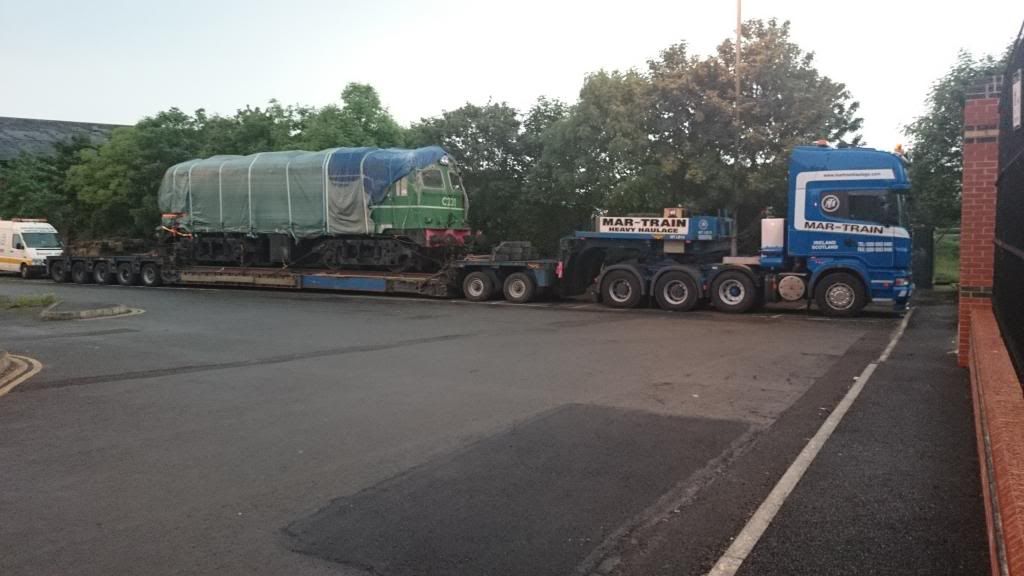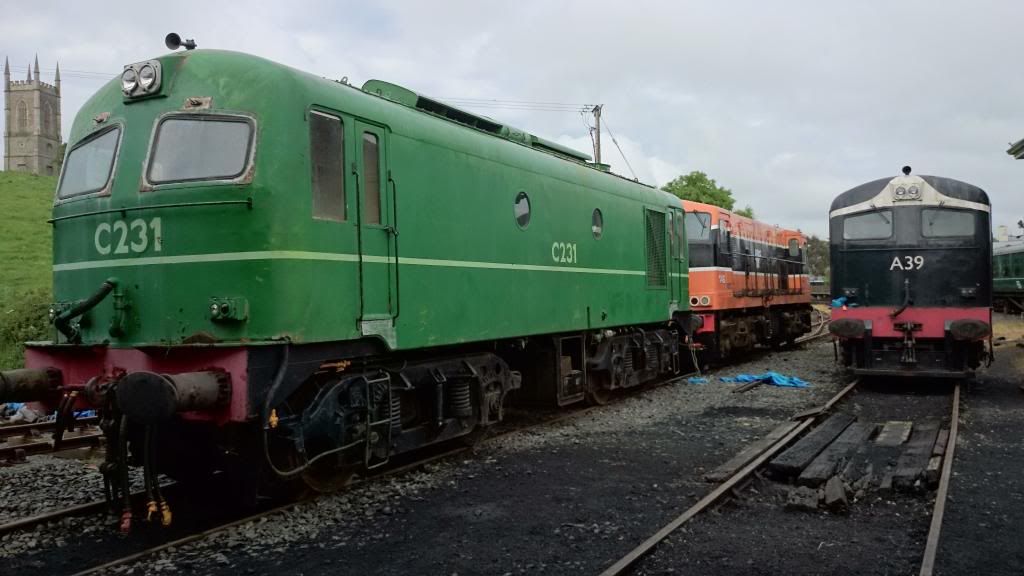I know a few Trainzers are involved with preservation so thought these shots may be of interest.
After a 4.30am rise, I headed to my local line to help with the delivery of a new toy (I say new, but the loco was built in 1956). Below are a couple of shots of the ex CIE Metropolitan Vickers C class. Withdrawn in 1983, it was purchased by the Irish Traction Group in 1992 for the sum of I£930.
5.45am. Special delivery.

4.40pm. Loco C231 finally unwrapped and awaiting maintenance before a return to traffic, 31 years after withdrawal. A39 was built by the same company but has a Co Co wheel arrangement.

After a 4.30am rise, I headed to my local line to help with the delivery of a new toy (I say new, but the loco was built in 1956). Below are a couple of shots of the ex CIE Metropolitan Vickers C class. Withdrawn in 1983, it was purchased by the Irish Traction Group in 1992 for the sum of I£930.
5.45am. Special delivery.

4.40pm. Loco C231 finally unwrapped and awaiting maintenance before a return to traffic, 31 years after withdrawal. A39 was built by the same company but has a Co Co wheel arrangement.


